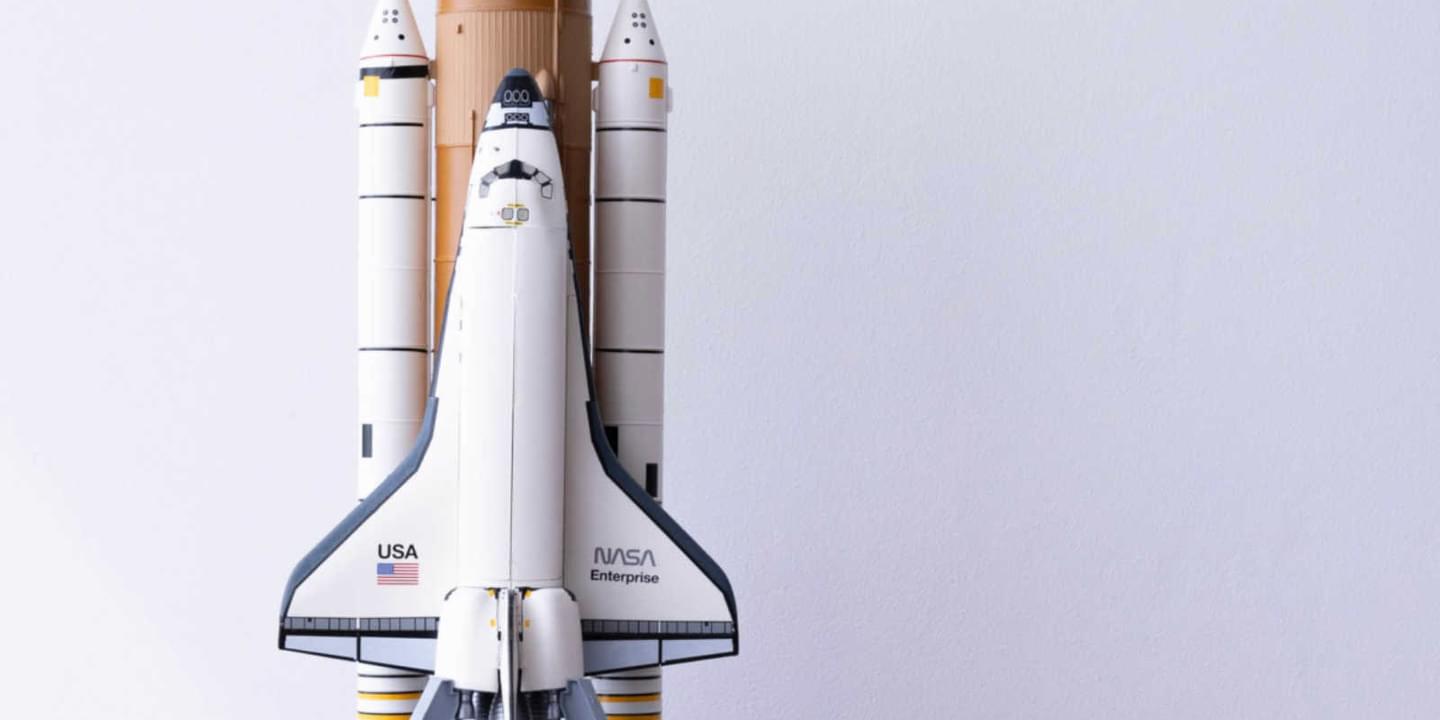Like many of us stuck at home, I’ve been watching an unhealthy amount of TV lately. Instead of looping reruns of Parks and Recreation, I committed to finding an interesting documentary to at least pretend like I’m learning something. When I stumbled across “Challenger: The Final Flight”, Netflix’s four-part docuseries on the Space Shuttle Challenger disaster, I couldn’t add it to my queue fast enough. I’ll admit that after a long day, I just want to sit back and zone-out to something mindless. The emotional toll a series like this takes on you isn’t necessarily relaxing – but it’s important. Throughout the series, I was consistently rewarded with important reminders of what real learning looks like.
I was three years old when the Challenger exploded in 1986. I don’t quite remember the details of the disaster at the time, but, similar to other national tragedies, I remember the stories around it. I remember the teacher on board, the shuttle’s “O-ring” failure, and President Reagan’s emotional, heartfelt speech later that night to console a nation in shock.
# An unwavering commitment to preparation
The documentary depicted something I hadn’t seen before – the incredible rigor and dedication of the astronauts’ training regimen. It detailed many of the exercises that were designed to simulate an astronaut’s experience in space and the critical procedures to complete various mission objectives. As someone that designs and executes learning and development experiences, I’m fascinated by the challenge of using simulations to replicate every potential element an astronaut might encounter on a mission.
For example, at one point the series explains how some crew members weren’t comfortable in the water, but knowing that the astronauts would need to be prepared for a potential splashdown scenario, the trainers took the astronauts out a few miles into the Atlantic Ocean and practiced the procedures over and over. This is the moment in the documentary when I literally hit pause and raved to my patient wife about the training program’s impressive commitment to simulating for what could happen.
Close your eyes and imagine the whiteboard for the training session with two columns: on the left, all the various elements of the mission; on the right, how to simulate it. Then someone asks, “How do we simulate zero gravity?” and thus the so-called “vomit comet” was born.
Do you really need to build a specialized airplane that descends quickly to simulate weightlessness? When you’re dealing with people’s lives, those are the corners of a training program you simply can’t afford to cut. But, because the stakes in most of our day-to-day lives are often much lower, corners are consistently cut. Corporate learning and development programs intended to teach people new skills are often the first to go.
# Sandboxes & Role playing
Unfortunately, I’ve been in too many situations where users of new technology need to learn how to use it effectively but experience a large learning curve because the project hasn’t prioritized simulations. In an ideal world, a user could practice endless scenarios in a “sandbox” or training environment – completing activities, clicking buttons, observing “cause and effect” scenarios, or trying to “break” the system, without impacting real data. Unfortunately for many projects, building and maintaining these sandboxes is time and resource-intensive.
Using simulations to learn new behaviors outside of technology (e.g., sales, interpersonal skills, leadership, etc.) can be easier, but is often still overlooked or downplayed. Role-playing can be difficult for some who may get self-conscious or find the activity silly. Silly or not, role-playing works to simulate as close to “the real thing” as possible. After all, you don’t want to be doubting your swimming abilities as you plummet towards earth’s oceans at 17,500 mph.
Shouldn’t the same theory apply in a business context? If you were performing a performance review for an underperforming team member, you would probably want to practice, or at least write down a few talking points beforehand.
Simulations have become even more important as we all continue to navigate the COVID-19 pandemic. With so many of us working remote, you can’t exactly turn to your work neighbor and ask, “Remind me how to create a payment order in this new system?” Users may feel even more alone working in a new system, so building skill, ability, and (most of all) confidence by letting them practice first will better prepare them for go-live. This is where implementing a Digital Adoption Platform (DAP) can be useful in your training efforts.
# Learning from the best
By the end of the documentary, I was simply awestruck. Naturally, I’m heartbroken by the lives lost and ruined, but the story I connected with the most wasn’t necessarily how these brave individuals died, but how they lived. They devoted years of their lives training day after day for something far more dangerous than I’ll ever endeavor.
No written word about the Challenger and her crew can end without evoking President Reagan’s address to the nation that fateful day:
“We will never forget them, nor the last time we saw them, this morning, as they prepared for their journey and waved goodbye and slipped the surly bonds of Earth to touch the face of God.”
Nothing I create matches the intensity or seriousness of astronaut training, but it doesn’t mean we can’t learn from the best.
Learn more about Propeller’s capabilities in corporate training and readiness, part of our people-focused People & Change practice.




